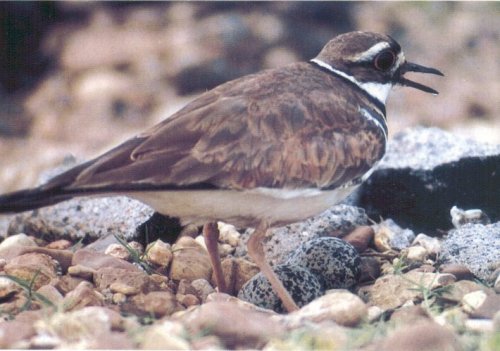
|
Temperature Behavioral Adaptations by Birds A bird's behavior can also help it cope with cold. It may tuck its bill under feathers of its back or wing, draw one leg into its feathers, or fluff its feathers to trap a larger volume of air. It my stay in the sun and position its body to maximize heat absorption or remain in areas sheltered from the wind. Under extreme conditions of cold and lack of food, birds such as the Common Poorwill and some hummingbirds adapt by going into a state of torpor in which metabolism slows and body temperature drops drastically. Some birds have apparently survived for up to three months in this state of dormancy. Hummingbirds commonly seem to spend cold nights in a state of torpor. Excessive heat also causes behavioral adaptations. One of the most common cooling mechanisms is gutar fluttering. Gutar fluttering consists of rapidly contracting and relaxing the muscles of the throat. The movement maximizes the flow of air over the moist membranes of the mouth. The bird is cooled by evaporation from those membranes as a dog is cooled by panting. |
|
| Killdeer | ||
|
Evaporative cooling is critical to birds because they do not have a sweat glands. Birds that nest in open environments in hot climates have a special problem. These birds often have difficulty keeping their eggs cool. Killdeer, Snowy Plovers, and several species of terns stand over their eggs to shade them on warm days. When temperatures rise, some birds fly to the nearest water; soak their breast feathers, and return tot he nest to wet their eggs or chicks. Belly-soaking also helps to cool the adult at the nest. Wood Storks and New World vultures use another unusual method of keeping cool. They excrete on their legs and rely on evaporation from the excrement to cool the blood going back to the body. Return to Affect of Climate on Birds Return to Oregon Bird Choices |
||